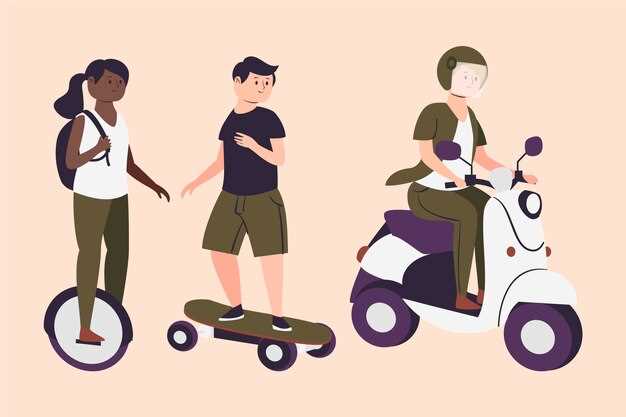

Motorcycling is not just a mode of transportation; it’s a lifestyle that fosters camaraderie among riders. An essential aspect of riding safely and effectively in a community is understanding hand signals and adhering to proper road etiquette. These non-verbal communications play a crucial role in enhancing safety on the roads, allowing motorcyclists to convey intentions clearly without relying solely on auditory signals like horns or indicators.
In this guide, we will explore the most common hand signals used by motorcyclists, providing a roadmap for clear communication among riders. Whether you’re signaling a turn, a stop, or simply sharing your presence on the road, knowing these gestures can significantly reduce the risk of accidents. Additionally, we will delve into the principles of road etiquette, which not only promotes safety but also fosters respect and cooperation among all road users.
Understanding and utilizing these signals and etiquette guidelines is important for riders of all experience levels. Whether you are a seasoned professional or a novice rider, enhancing your knowledge in these areas will contribute to a safer riding environment and a more enjoyable experience on the open road. Join us as we navigate through the essential hand signals and the unwritten rules of the road that every motorcyclist should know.
Understanding Basic Hand Signals for Turns and Stops

Hand signals are essential for motorcycle safety, allowing riders to communicate their intentions clearly to other road users. Mastering these signals can enhance safety and make road sharing more predictable. Here are the basic hand signals for turns and stops.
To signal a left turn, extend your left arm horizontally to the side, keeping it straight. This gesture clearly indicates your intention to turn left, making it easily visible to both cars and other motorcyclists.
For a right turn, there are two accepted methods. One option is to extend your left arm and bend it upward at a right angle, forming an “L” shape. Alternatively, you can extend your right arm horizontally to the side. Either method effectively communicates a right turn but be mindful of which approach is more visible to those around you.
To indicate that you are stopping or slowing down, lower your left arm and bend it at a right angle, with your palm facing back. This signal alerts drivers and other riders to reduce speed or prepare to stop, crucial in preventing rear-end collisions.
Practicing these signals regularly will help you become more comfortable using them in various traffic situations. Remember to be consistent and reliable in your signaling, as this fosters trust among other road users. Effective communication on the road is key to ensuring everyone’s safety, especially on a motorcycle.
Navigating Group Rides: Communication and Positioning Strategies

Participating in group rides presents unique challenges and requires effective communication and strategic positioning to ensure safety and enjoyment for all riders. Understanding how to navigate these rides can enhance the experience and reduce risks on the road.
Communication is Key
Prior to the ride, it’s essential for all participants to establish clear methods of communication. This includes agreeing on hand signals for common situations such as slowing down, stopping, or changing lanes. Riders should familiarize themselves with these signals to ensure that messages are conveyed quickly and efficiently. For example, a left arm extended horizontally indicates a left turn, while an arm bent at the elbow pointing down signifies a slowdown.
Maintain a Safe Following Distance
Positioning within the group is critical for safety. Each rider should maintain a safe following distance, typically a minimum of two seconds behind the motorcycle in front. This distance allows for adequate reaction time in case of sudden stops or emergencies. Riders should also stagger their positioning within the lane, with one motorcycle closer to the left side and the next to the right, which maximizes visibility and minimizes the risk of collisions.
Be Aware of Group Dynamics
Understanding the dynamics of the group is vital. More experienced riders may take lead positions, while less experienced riders should occupy the middle or back positions. This arrangement provides support for newer riders, allowing them to feel more secure with experienced bikers guiding the way. It’s crucial for all riders to stay aware of their surroundings, including the actions of other motorcycles and potential hazards on the road.
Use of Intercom Systems
When available, riders can utilize intercom systems to enhance communication during the ride. These devices allow for real-time updates and instructions, making it easier to respond to changing conditions or obstacles. However, riders should remain cautious not to rely solely on technology, as visual signals and awareness of the road are still paramount.
Adapting to Conditions
During group rides, it’s vital to adapt to varying road and weather conditions. Riders should be prepared to adjust speed and positioning accordingly, ensuring that the group remains cohesive and safe. For instance, when navigating through tight turns or adverse weather, a more conservative pace might be necessary to maintain control and visibility.
Conclusion
Effective navigation during group rides hinges on communication and strategic positioning. By adhering to established signals, maintaining safe distances, understanding group dynamics, utilizing technology where appropriate, and adapting to conditions, motorcyclists can enjoy their group rides while prioritizing safety and camaraderie.
Adapting to Different Road Conditions: Signals for Safety
Motorcyclists must be vigilant and adapt their riding techniques as road conditions change. Different environments, such as wet, gravel, or uneven surfaces, can significantly affect traction and control. Therefore, using appropriate hand signals becomes crucial for ensuring safety for both the rider and surrounding vehicles.
In rainy conditions, visibility and traction are diminished. Riders should signal their intentions clearly by using specific hand signs, such as extending the left arm downward to indicate a decrease in speed. This signal alerts following drivers to prepare for slower speeds due to slippery surfaces. Furthermore, maintaining an ample distance from other vehicles can prevent accidents, as stopping distances may increase on wet roads.
When faced with gravel or unpaved roads, bikers should use an open hand signal to indicate potential hazards like loose stones or obstacles ahead. This communicates the need for caution among fellow riders and motorists, signaling to reduce speed and remain vigilant for changing conditions. Additionally, it is wise to avoid sudden maneuvers, as unexpected movements on unstable surfaces can lead to loss of control.
During nighttime or low-visibility situations, hand signals take on an added importance. Using the left arm extended at a right angle represents a right turn, while an arm straight out indicates a left turn. Incorporating reflective gear and utilizing high-visibility gloves can enhance safety further, ensuring that signals are seen even in dim conditions.
In summary, adapting motorcycle hand signals to various road conditions is essential for maintaining safety. Clear communication through well-understood signals not only aids in personal safety but also creates awareness among other road users, reducing the likelihood of accidents and ensuring a safer riding experience.





